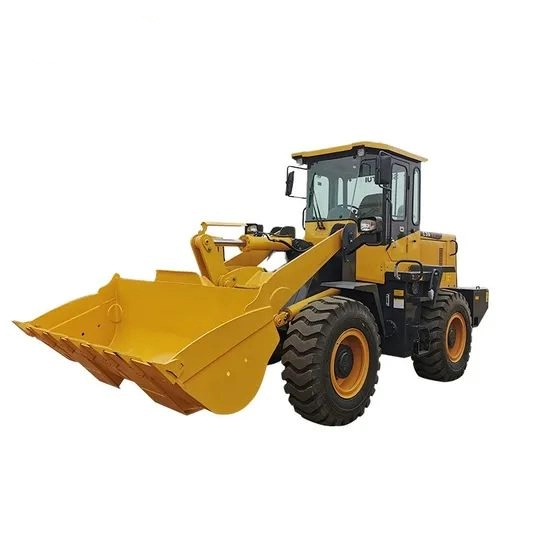Loaders are core equipment in fields such as engineering construction, mining, and agricultural production. Whether their selection is reasonable directly affects operational efficiency, cost control, and safety. When purchasing, comprehensive consideration should be given to various factors such as specific needs, working condition characteristics, and equipment performance. The following is a detailed purchasing guide:

I. Clarify operational needs: Core basis
Before purchasing, it is necessary to clearly define the core purpose and operating scenarios of the equipment to avoid excessive or insufficient functions.
Before purchasing, it is necessary to clearly define the core purpose and operating scenarios of the equipment to avoid excessive or insufficient functions.
Types of operations
- Earthwork operations (such as site leveling, earthmoving and transportation): Attention should be paid to bucket capacity, lifting force, and traveling speed.
- Mining operations (such as ore loading): Emphasis should be placed on equipment durability, engine power, and tire wear resistance.
- Material handling (such as sand, construction waste): The unloading height and the stability of bucket grabbing need to be considered.
- Agriculture/forestry (such as straw handling, bulldozing and obstacle clearance): Small and medium-sized loaders can be chosen to balance flexibility.
Working environment
- Site conditions: For flat roads (such as construction sites), ordinary tires can be selected; for muddy and rough roads, anti-skid chains or crawler loaders are required; for heavy-duty scenarios such as mines, reinforced chassis are needed.
- Space constraints: For narrow sites (such as factories, roadways), models with short wheelbase and small turning radius should be selected; for large open sites, large-tonnage equipment can be considered.
- Climatic conditions: In high-temperature areas, attention should be paid to engine heat dissipation; in low-temperature areas, hydraulic systems and starting devices with good anti-freezing performance should be selected.
Operational intensity
- Intermittent operations (such as small-scale projects): Small and medium-sized loaders (2-5 tons) can meet the needs with higher cost performance.
- Continuous high-intensity operations (such as mines, large-scale infrastructure): Large-tonnage (above 6 tons) and high-reliability models are required to reduce downtime due to faults.
II. Comparison of core parameters: Performance matching
The key parameters of loaders directly determine their operational capabilities, and the following indicators should be focused on:
The key parameters of loaders directly determine their operational capabilities, and the following indicators should be focused on:
| Parameters | Functions and selection points |
|---|---|
| Rated load capacity | A core indicator, which should match the weight of materials (for example, a 5-ton loader is suitable for loading materials below 5 tons at a time). Overloading will shorten the service life of the equipment. |
| Bucket capacity | Corresponding to the load capacity, usually 0.5-10 cubic meters (0.5-3 m³ for small-tonnage, 5-10 m³ for large-tonnage). It should be selected according to material density (for example, materials with high density like sand require a slightly smaller bucket). |
| Engine power | The higher the power, the stronger the power (especially when overloading and climbing), but the fuel consumption is higher. The commonly used power range is 30-300kW (30-100kW for small-tonnage, 150-300kW for large-tonnage). |
| Lifting height/unloading distance | Lifting height determines whether unloading to high carriages is possible; unloading distance (horizontal distance from the bucket center to the vehicle body) affects the convenience of unloading, and a longer distance is suitable for high-sided trucks. |
| Traveling speed | The high-speed gear speed (usually 20-40km/h) affects the transfer efficiency; for on-site operations, emphasis can be placed on low-speed gear torque. |
| Turning radius | A small turning radius is suitable for narrow spaces, such as municipal engineering and warehouse operations; models with a large radius have better stability and are suitable for open sites. |
III. Power type selection: Fuel vs electric
Fuel-powered loaders (mainstream choice)
Fuel-powered loaders (mainstream choice)
- Advantages: Strong endurance (ready to use after refueling), stable power output, adaptability to extreme environments (low temperature, high dust), suitable for long-term outdoor operations.
- Types:
- Diesel-powered: Large torque, moderate fuel consumption, suitable for heavy-duty operations (mines, infrastructure), and is the mainstream in the market.
- Gasoline-powered: Slightly lower noise, lower cost, but high fuel consumption and weak power, only suitable for light operations (agriculture, small-scale engineering).
- Applicable scenarios: Outdoor, no emission restrictions, scenarios with high demand for continuous operations.
Electric loaders (emerging trend)
- Advantages: Zero emissions, low noise (suitable for indoor or residential area operations), low maintenance cost (no engine maintenance), low energy consumption cost (electricity is cheaper than fuel).
- Limitations: Endurance depends on batteries (4-8 hours of work on a single charge), long charging time (about 1-2 hours for fast charging), high initial purchase cost (30%-50% more expensive than fuel-powered machines of the same tonnage), and battery performance degrades in low-temperature environments.
- Applicable scenarios: Indoor warehouses, municipal sanitation (operations in residential areas), places with high environmental protection requirements (such as around food factories and pharmaceutical factories).





